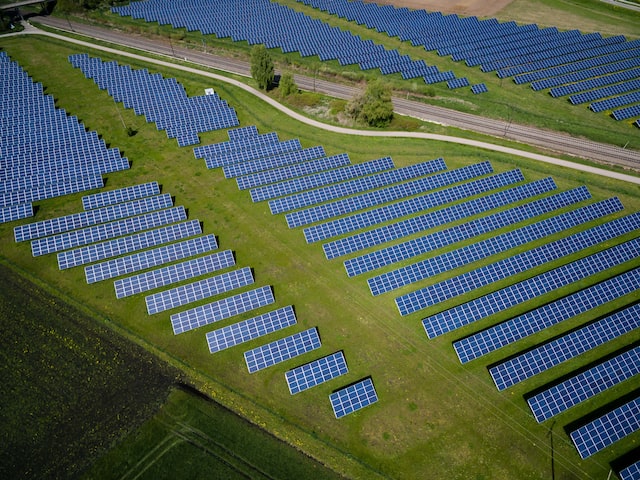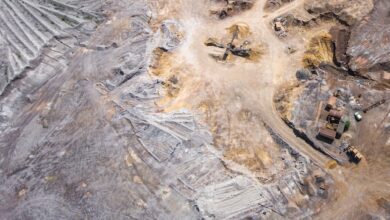Renew Energy Resources in Africa – Africa Facts Zone

Because of technological advancements and the resulting reduction in the cost of renewable energy systems, Africa is seeing an explosion in the use of renewable energy resources.
To put it another way, “dirty” fossil fuels like coal and oil are being replaced by renewables in the electricity industry because they provide reduced emissions of carbon dioxide, among other pollutants.
However, not all renew energy resources are good for the environment.
When it comes to the effect on wildlife, climate change, and other concerns, biomass and huge hydropower dams provide challenging decisions.

What is Renewable Energy?
Clean energy, also known as renewable energy, is derived from natural processes or resources that are continually renewed over time.
The sun and wind, for example, continue to shine and blow despite the fact that their availability is contingent on the time of day and the weather.
While harnessing the power of nature has been utilized for heating, transportation, lighting, and other purposes for a long time, renew energy resources is not a new invention.
Boats have sailed the oceans and grain has been ground by windmills propelled by the wind.
As the day progressed, the sun supplied enough warmth to keep the flames stoked all night long.
Coal and fracking gas have been more popular in the last 500 years as a more affordable, than dirtier, alternative source of energy.
Different Types of Renew Energy Resources
Solar Energy
For thousands of years, humans have used sun energy to raise crops, keep warm, and dry food.
More solar energy falls on the Earth in an hour than the whole globe consumes in a year, according to the National Renewable Energy Laboratory.
Sunlight can be used in various ways nowadays, from heating our homes and businesses, to warming our water, to powering our gadgets.
Electricity may be generated locally for homes and businesses via rooftop panels or neighborhood initiatives powered by distributed solar systems.
Solar farms, which use mirrors to focus sunlight onto vast fields of solar cells, are capable of generating enough electricity to run tens of thousands of homes.
Wind Energy
Skyscraper-scale wind farms with blades almost as broad as a football field are already standing guard throughout the globe.
Using wind power, an electric generator is fed by the spinning blades of a turbine. Wind power, which accounts for less than 6 percent of total U.S. generating, is now the cheapest form of electricity.
Hydroelectric Power
By rotating a turbine’s blades, hydropower generates energy from water, which is often fast-moving water in a river or swiftly falling from a high point.
Large hydroelectric projects, or mega-dams, are widely regarded to be non renew energy resources across the world.
Biomass Energy
Plant and animal waste, as well as crops, trees, and waste wood are all examples of biomass. With a steam turbine, the chemical energy of biomass may be converted into electricity.
A lot of people believe that biomass is a clean, renewable, and greener alternative to coal and other fossil fuels for generating power.
Many kinds of biomass, particularly those from forests, have been shown to emit more carbon dioxide than fossil fuels.
Geothermal Energy
In a hot spring, you’ve tapped into geothermal power. To generate power, hydrothermal resources (such as hot subterranean water) are brought to the surface and pushed through turbines.
If the steam and water they utilize are pumped back into the reservoir, geothermal facilities usually have little emissions.
However, in places that are already deemed seismically active, it is possible to build geothermal plants without relying on subterranean reservoirs.
Also Read: Top Gas and Oil Exploration Companies in Africa
Renew Energy Resources in Africa
Solar Energy
There are several locations in Africa that are permanently sunny, such as the Sahara Desert, which gets the most sunshine of any continent on Earth.
Africa is the only continent with such high levels of sun radiation because of its closeness to the equator, rain forests get less global solar irradiation than deserts.
Solar resources are generally evenly distributed over Africa, with more than 85% of the continent getting at least 2,000 kWh/(m2 year).
According to a recent research, the European Union could get all of its energy from a solar power plant spanning only 0.3 percent of North Africa’s land area.
Wave and wind resources
Wind and wave energy resources are plentiful and underused throughout Africa’s coastlines, particularly in the north and south.
Many countries in eastern Africa have the potential to harness significant quantities of electricity from geothermal sources.
The amount of wind power available along Africa’s west coast, at about 3,750 kWh, is sufficient to meet the continent’s projected energy needs in the future.
In Central Africa, the wind resources are lower than in the rest of the continent.
Geothermal resources
In eastern Africa, geothermal power is concentrated, however, there are several high-intensity geothermal potential areas scattered across the continent.
A 5,900-kilometer long East African Rift, which includes Eritrea, Ethiopia, Djibouti, Kenya, Uganda and Zambia, has great potential for geothermal energy.
Biomass
Sub-Saharan Africa accounts for 86% of all African biomass energy consumption, excluding South Africa.
Burning wood for energy is a common practice in Africa, however the high rates of respiratory sickness caused by this practice need immediate attention.
Taking into account the cost difference between biomass and fossil fuels, it is more cost-effective to develop the technology used to burn biomass rather than to utilize fossil fuels.
Many biomass fuels may be converted to greener energy using gasification and anaerobic digestion technologies.
Renewable energy use in Africa
Solar Power
The 8.5MW Agahozo-Shalom Youth Village plant in Rwanda’s Eastern Province’s Rwamagana District is Africa’s first utility-scale solar farm and source of renewable energy resources.
The facility employs 28,360 photovoltaic panels and generates 6% of the country’s total electricity needs. US, Israeli, Dutch, Norwegian, Finnish, and British finance and expertise were used to develop the project.
Wind Energy
Morocco’s Koudia Al Baida Farm is Africa’s biggest wind farm. Tangier and Tarfaya are constructing two more major wind farms.
In Marsabit County, Kenya is constructing the Lake Turkana Wind Power (LTWP), a wind farm.
Kenya’s national power supply will be increased, while employment are created and greenhouse gas emissions are reduced.
The project At full capacity, LTWP is expected to generate 310 MW of wind power.
Batokunku, a Gambian community, became the first in West Africa to have a wind turbine built in January 2009. Its 150 kilowatt turbine generates electricity for the 2,000 residents of the town.
Geothermal power
Only Kenya has made use of the Great Rift Valley’s geothermal potential in Africa.
In addition to three active geothermal power plants, Kenya is projected to have 10,000 MWe of potential geothermal energy. There are now twenty drilling locations in the country that need to be surveyed.
Source Credit: nrdc.org, wikipedia.org
